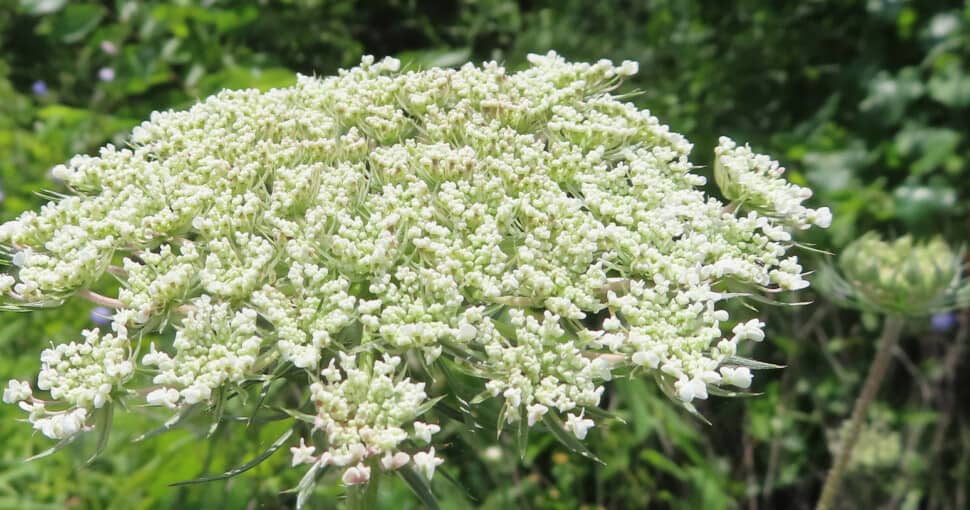Queen Anne’s lace, or Daucus Carota, is a flower native to Europe, and its tiny white flowers look like lace. Queen Anne’s lace is a wildflower, and while this flower has distinctive characteristics, there are a few plants that are mistaken for Queen Anne’s lace.
Contents
Queen Anne’s lace is found across the United States. From May till October, these beautiful white flowers grow wild. Queen Anne’s lace is commonly referred to as wild carrot and is fondly called a bee’s nest or bird’s nest due to the upward curling of the stems, which form a basket.
This poignant flower is covered with tales of folklore, and the origin of its name is still unknown, but historians believe it was named after Queen Anne II. Queen Anne II experienced child loss and had only one surviving heir, and Queen Anne’s lace flower is strongly associated with child loss. The most commonly found flower that is most mistaken for Queen Anne’s lace is the poison hemlock, but five other species look very similar to Queen Anne’s lace.
Six plants that look like Queen Anne’s Lace include:
- Conium Maculatum (poison hemlock)
- Ammi Majus (bishops flower, false Queen Anne’s lace)
- Heracleum Sphondylium (hogweed)
- Achillea Millefolium (Yarrow)
- Pastinaca Sativa (wild parsnip)
- Zizia Aurea (golden alexander)
1. Conium Maculatum (Poison Hemlock)
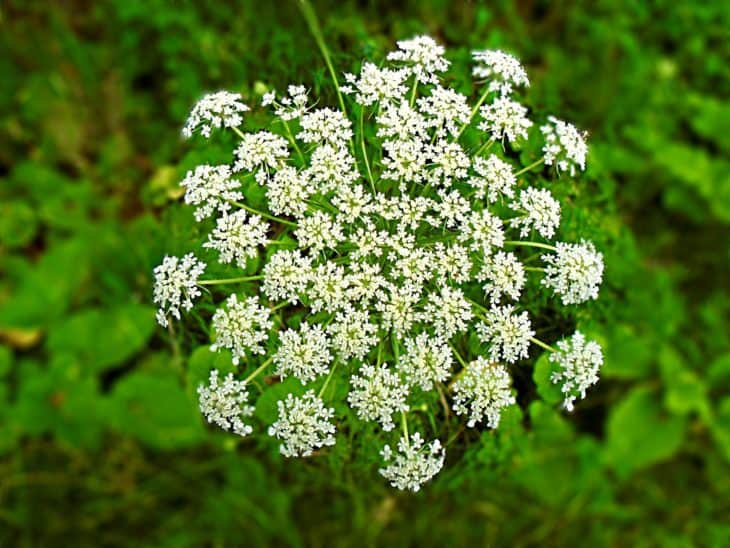
The Poison Hemlock is the first flower on the list that strongly resembles Queen Anne’s lace. The poison hemlock is a biennial plant with multiple flowers, and although it looks a lot like Queen Anne’s lace, it has a few distinguishable differences.
Queen Anne’s lace and poison hemlock have differently shaped flowers, and the Queen Anne’s lace flower also has a slight purple center in the middle of each flower, whereas the poison hemlock does not. Therefore, the poison hemlock not only looks like Queen Anne’s lace but is very poisonous. The root and seeds are the most toxic part of the plant, and even if ingested in small quantities can be fatal.
Poison hemlock is also one of the deadliest plants in Noth America and is found along roads, hiking trails, and fields. Queen Anne’s lace does not grow taller than three feet tall, but poison hemlock does. Queen Anne’s lace can also be differentiated from poison hemlock by the stem. Queen Anne’s lace has a green stem, while poison hemlock has purple spots on its stem.
Related: 8 Plants That Look Like Poison Hemlock
2. Ammi Majus (Bishops Flower, False Queen Anne’s Lace)
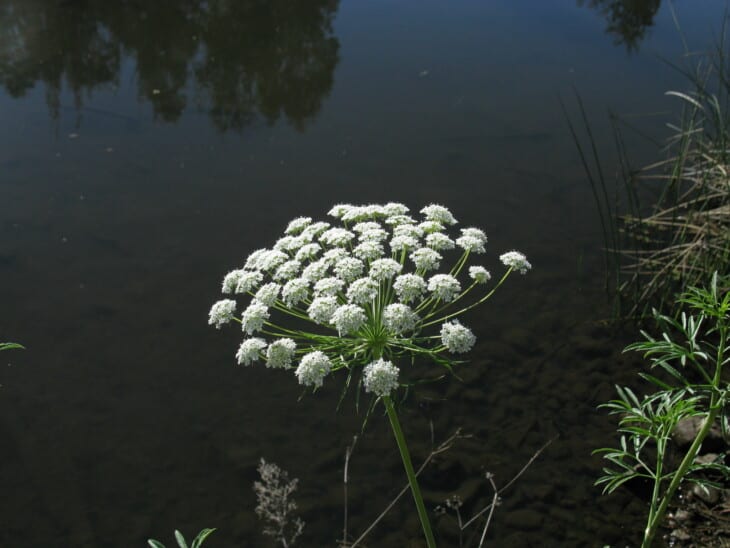
Ammi Majus is also called false Queen Anne’s lace because of its resemblance to Queen Anne’s lace. This annual flower has many lacey white flowers and tall, slender stems. The false Queen Anne’s lace is mainly used as foliage and blooms from early summer until fall and is a very attractive flowering plant in gardens.
The Ammi Majus is a member of the carrot family and is found in Southern Europe, North Africa, and west and Central Asia. The false Queen Anne’s lace flower is also located across China and is grown and cultivated in medicinal farms. In the west, the bishop’s flower is widely used in flower arrangements and is long-lasting when used in flower bouquets.
The Ammi Majus is also widely used as a treatment for skin disorders and urinary tract infections. Despite its medicinal properties and attractive blooms, the false Queen Anne’s lace should not be used in a garden with horses, cats, and dogs, as it can be toxic to these pets.
3. Heracleum Sphondylium (Hogweed)
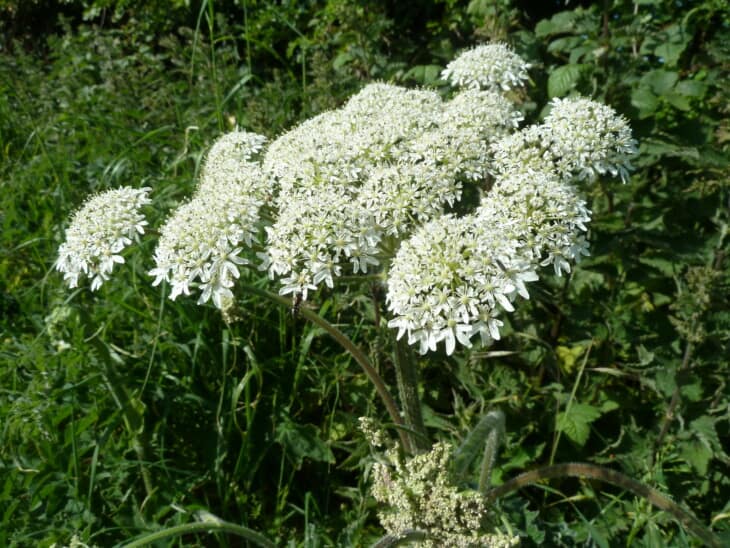
Hogweed is a poisonous, noxious weed often mistaken for Queen Anne’s lace. The hogweed has flowers similar to Queen Anne’s lace and consists of white lace caps with many small white flowers. The only difference is that Queen Anne’s lace has a distinctive small purple center in each flower.
Queen Anne’s lace has a solid green, hairy stem, while hogweed has a smooth stem with red spots and streaks and the flowers have no purple coloring. While the hogweed can be beautiful, it grows tall and leaks a sap that can scorch your skin and cause an allergic reaction.
The hogweed is invasive and grows aggressively, and most people aren’t aware of its toxicity. Hogweed is found across the United States and Canada and grows almost anywhere, whereas Queen Anne’s lace grows along roadsides, fields, and open fields and prefers a dry, high-sun area to grow.
Related: 8 Plants That Look Like Hogweed
4. Achillea Millefolium (Yarrow)
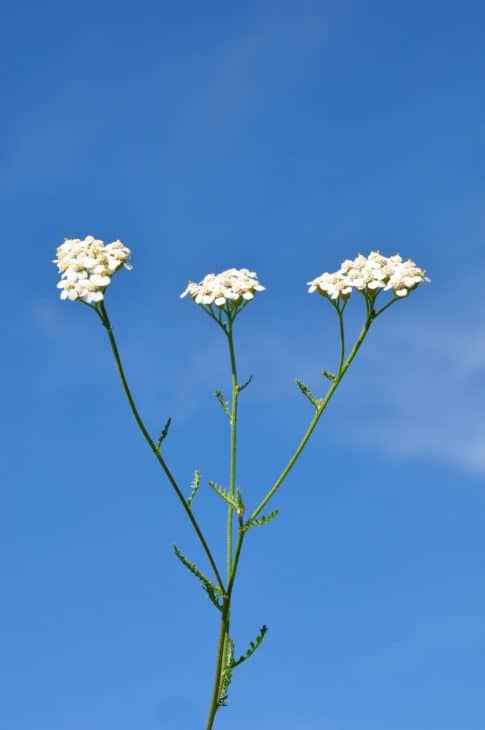
Yarrow or Achillea Millefolium is a perennial flower used in gardens as a pollinator. The yarrow attracts butterflies and other insects and is the most medicinal flowering plant with white flowers. Other common names for yarrow include old man’s pepper, devil’s nettle, and Thousand seal.
The yarrow flower head has a similar structure to the Queen Anne’s lace. The yarrow flower head has five ray flowers that look like petals and surround many smaller disk flowers which are close together to form the head of the flower. The yarrow is commonly mistaken for Queen Anne’s lace, but another distinctive feature of the yarrow plant is its feathery leaves compared to the more extended leaf structure found on the Queen Anne’s lace plant.
Queen Anne’s lace has many white flowers, which creates an umbel. The most distinctive difference between Queen Anne’s lace and yarrow is the purple coloring in each Queen Anne’s lace flower. The yarrow flower is native to Asia, North America, and Europe. This flower is found in many grasslands and open forests, and most of its growth occurs during the spring.
5. Pastinaca Sativa (Wild Parsnip)
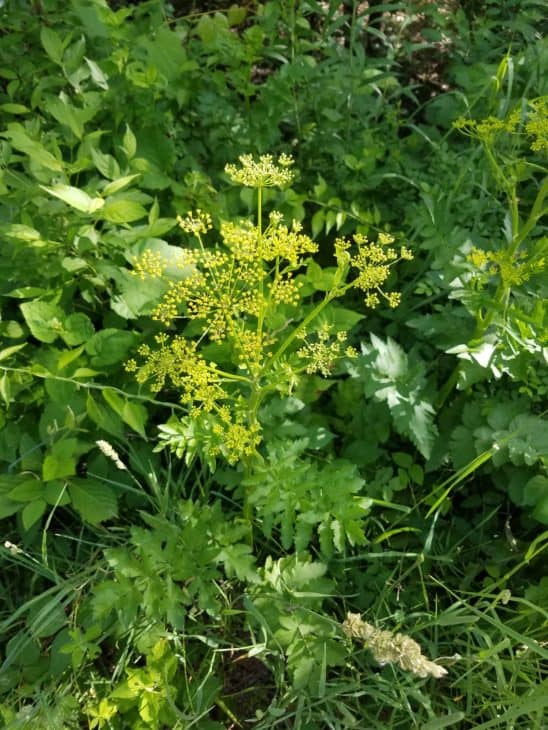
Pastinaca Sativa, or Wild Parsnip, is another Queen Anne’s lace lookalike but can be differentiated due to its yellow flowers instead of the white flowers. Wild parsnip blooms later than Queen Anne’s lace and is usually avoided because it can cause a rash.
Wild Parsnip is known for its edible root and is cultivated worldwide but is native to Europe and Asia. This flowering root vegetable is considered invasive and spreads quickly in fields, roadsides, and backyards. Wild parsnip is part of the carrot/parsley family and has a few lookalikes, including hogweed, cow parsnip, and Queen Anne’s lace.
Wild parsnip is a monocarpic perennial plant and grows between 4 and 6 feet tall. The leaves of the wild parsnip resemble large celery leaves, and seedlings often appear from February to April yearly. Flowers are visible from June to mid-July. Unfortunately, this plant is also toxic to animals and livestock, and removal is encouraged due to its toxicity.
6. Zizia Aurea (Golden Alexander)
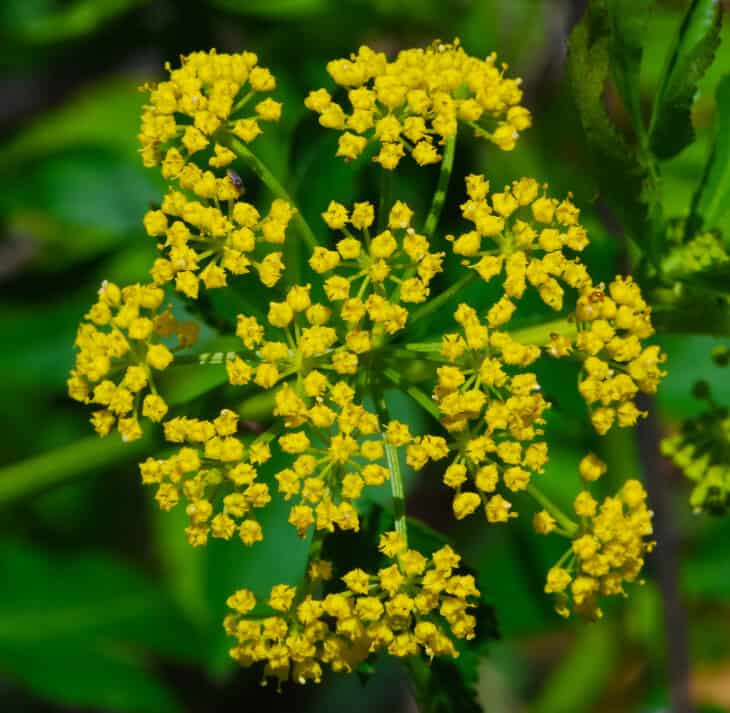
Golden Alexander bears a close resemblance to Queen Anne’s lace. The golden Alexander plant can be identified by its three to four-inch wide umbels of yellow flowers. Although very similar in structure to Queen Anne’s lace, golden Alexander displays yellow blooms instead of white.
This perennial flower grows in woodlands, meadows, and along riverbanks and is native to Eastern Canada and the United States. Golden Alexander is also found in many commercial gardens and remains in full bloom throughout summer. This beautiful yellow flowering plant is also a food source for the black swallowtail butterfly and a popular home for ladybugs.
Golden Alexander belongs to the carrot family and is a self-propagating flower. This plant is a pollinator and attracts bees, wasps, and beetles. This plant is nontoxic compared to other Queen Anne’s lace lookalikes like hemlock and wild parsnip and is adored in home gardens due to its minimal care requirements and pollinator properties. The Golden Alexander plant also adds lots of color to gardens and blooms earlier than most other flowers.

